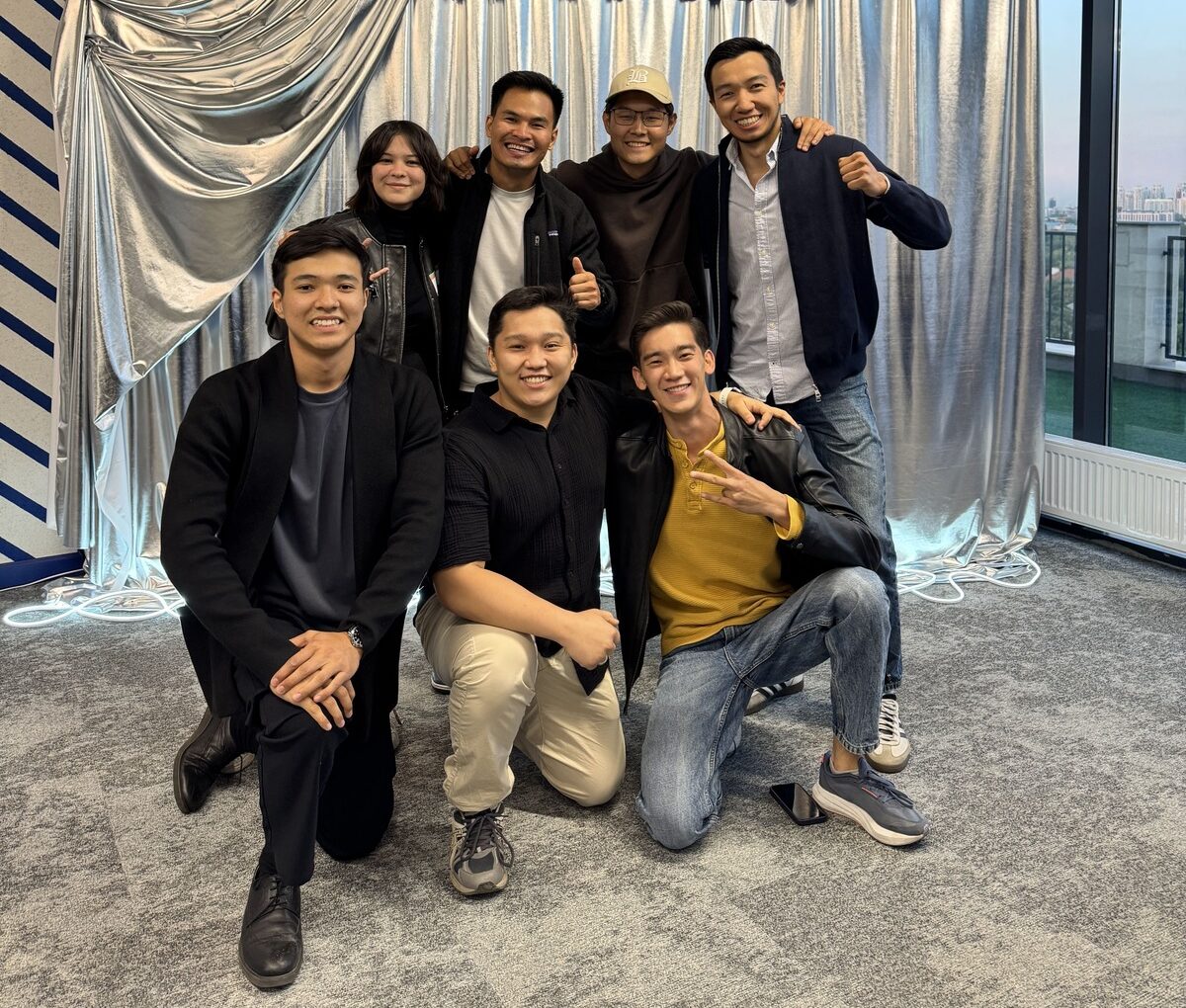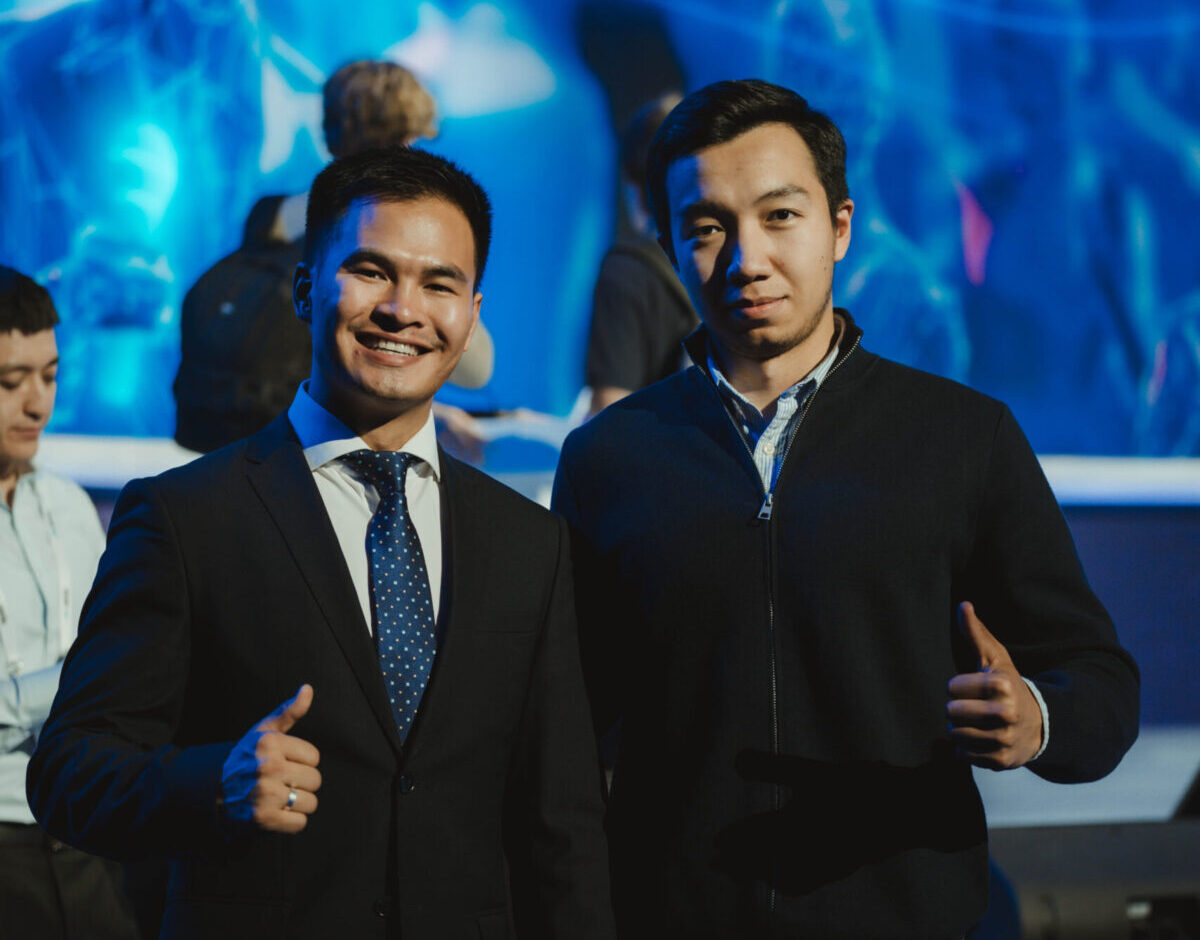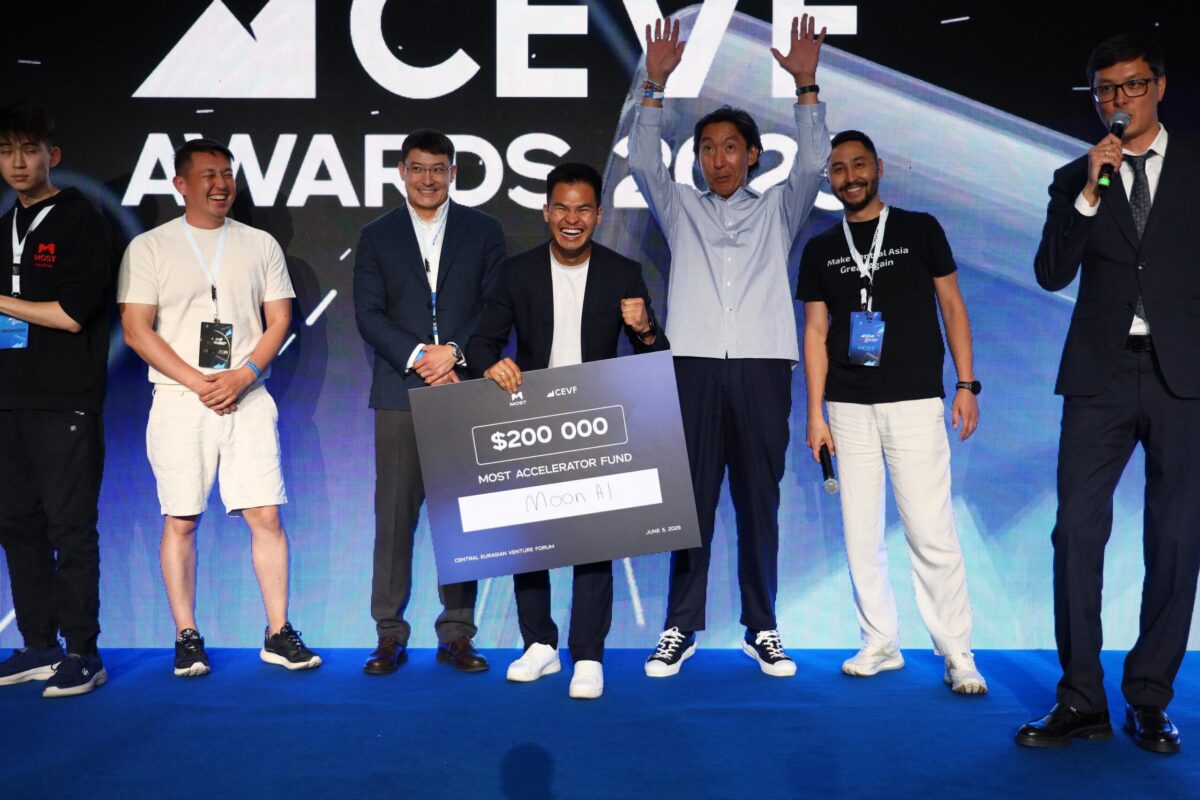A Kazakhstani Invested $100,000 in a Startup To Support the Business. It's Now Valued at $4 Million

Askhat Adkhamov launched his first project back in 2020 at the age of 20. It was an online school called Terenoi, offering math and English courses for kids and teenagers. The project started out successfully, but after two years, they had to shut it down. After that, Askhat moved into traditional business and consulting. Last year, he decided to launch a new venture. That’s how MoonAI came to life. It’s a startup focused on creating AI agents that automate sales and customer support for small and medium-sized businesses.
For the joint project by Digital Business and Astana Hub, 100 Startup Stories of Central Asia, Askhat shared why he chose to launch another tech venture, how MoonAI’s AI agents stand out from other market offerings, and how the project managed to start generating revenue right away. He also revealed how much of his own money he invested in the product and why he gave a share of the company to one of the investors.
«There was a time when I was earning about ten times more than during the startup phase»
– Askhat, you closed your EdTech project Terenoi in 2022. What did you focus on after that?
– I gained significant experience in sales, so over the next two years, I worked in consulting, helping companies build and systemize their sales departments. In some projects, I was brought in as a consultant, while in others, I built the processes from scratch. I've worked with around 150 companies so far.
Another area I focused on was organizing business tours in collaboration with well-known Kazakh and international entrepreneurs.

– What made you decide to take the risk and launch a new project again?
– There was a time when I was earning ten times more than during my first startup. But I felt much happier working in the venture space. I realized that, for me, money isn’t as important as the opportunity to create something meaningful, pursue big goals, and make an impact on the world around me.
After Terenoi, I was searching for a business that would truly ignite a spark in me. I didn’t just want to start something to make money. I wanted to build an idea with the potential to grow exponentially and evolve according to the rules of the tech market.
– At what point did MoonAI come to life?
– In 2024, OpenAI released the next version of GPT-4o. I tried it in real work and became convinced that artificial intelligence is a technology truly capable of changing the world.
At first, I wanted to solve my own pain point using AI. When organizing the tours, we received a large number of applications that had to be processed manually. On top of that, the average price for a trip was £15,000, so it was important to qualify leads and identify those who were genuinely interested and able to pay.
To solve that, I created an AI agent that responded to inquiries 24/7 and filtered out relevant requests. I then offered the same bot to companies I was consulting for, and the feedback was very positive. By mid-2024, I decided to fully focus on MoonAI.
«Some clients receive a high volume of leads at 3 or 4 in the morning»
– What problems can your AI agents currently solve for SMEs?
– Initially, we focused on solving one of the biggest pain points for any business — missed inquiries, which often lead to lost clients. One of our clients, for example, organizes pilgrimages to Mecca. We discovered that a large number of leads came in at 3 or 4 in the morning, right after the morning prayer. That’s when many people feel the strongest desire to undertake Umrah (a minor pilgrimage to Mecca that can be done at any time — note by Digital Business). If you don’t respond to that inquiry immediately and convert it into a real client, there’s a high chance the person might change their mind or forget about it later in the day.

In addition, fast responses help eliminate the temptation to turn to competitors. Speed is often associated with quality. Many people assume that if a company replies quickly, it's reliable and trustworthy.
Moreover, our agents can identify the most engaged leads and prioritize those requests for employees first. This also helps reduce staff turnover. By handling routine tasks, the agent frees managers from unqualified or irrelevant inquiries, allowing them to focus on high-value interactions. As a result, their motivation increases, and so does their loyalty to the company.
– But most existing bots offer a similar set of features. What makes MoonAI agents unique?
– Around 30% of our clients had previously tried working with other companies and implemented AI bots, but the experience was disappointing.
During testing, everything looked perfect—the agent responded almost like a human. But in real life, things were very different. People used dialects, mixed languages, sent audio and video messages, made typos, and behaved in completely unpredictable ways. Without proper context, the bots got confused and couldn’t handle even fairly simple requests. As a result, businesses lost clients and were left frustrated.

A similar issue came up when the same WhatsApp number was used for both new and existing clients. Many businesses want AI agents to handle only new inquiries, while returning clients should be served by human managers. But off-the-shelf solutions often don't take that into account. As a result, a loyal client who has already paid for a tour might get a generic reply like, «Where do you want to travel?»
That doesn’t happen with our bots. One of MoonAI’s key advantages is deep, two-way integration with the client’s internal systems. This gives the AI more context about the business and its customers, allowing it to respond appropriately in different situations.
– What does it mean?
– With one-way integration, a bot might only receive basic information from the client — like a phone number — and record it in the database. In our case, MoonAI agents can do much more: they not only fill in the CRM but also retrieve data from it.
Here’s an example from the tourism sector. For example, let’s say you booked a trip to Turkey six months ago for a family of four. Our AI agent has access to that history. So instead of asking generic questions like, «How many people are traveling?» or «Are there any children?», it can ask something more personalized, like: «Will you be traveling with the same group as last time?» That kind of interaction builds trust and increases customer loyalty.
MoonAI can build a multi-agent system where each stage of the customer journey is handled by a dedicated agent—one for new leads, another for supporting existing clients, and so on. As a result, while standard bots typically offer 85–90% accuracy, our agents consistently reach 98–99%.

– How were you able to achieve such a high level of accuracy?
– At first, our agents performed at roughly the same level as most others on the market. But as we started using them in real cases, we identified where the system was falling short and began improving it. Since the second quarter of 2024, we've conducted a large number of customer development interviews and tests, which helped us significantly deepen our integrations. Today, the model not only has access to context, but also continuously learns from real interactions, both successful and unsuccessful.
«After we changed the business model, our MRR grew by nearly 2.5 times in just two months»
– How did you go about finding new clients?
– I started by sharing what I was working on through my personal blog, which brought in the first wave of inquiries—mainly from education and tourism companies, where I already had strong experience. We sold integrations for anywhere between $500 and $5,000, depending on the complexity of the task, and continued to support clients through a subscription model. These early projects helped cover our operating costs and confirmed that the product was delivering real value to businesses.
To grow our expertise across different industries, we began involving specialists with proven experience and deep knowledge in their respective fields. These experts may not be familiar with AI agents, but they know how to build business processes within their industries. That’s important, because clients don’t always know exactly what they need or the best way to achieve it. As Henry Ford famously said, «If I had asked people what they wanted, they would have said faster horses». Of course, we listen to our clients, but thanks to our experience, we're often able to offer solutions that go beyond what they imagined.
– How many clients does the startup currently have?
– Since our launch, we've worked with 160 companies. While we used to take on all incoming inquiries, we now intentionally turn some of them down.
These are usually businesses that lack ERP and CRM systems and operate in a state of chaos. In such cases, automation won’t help, because an AI agent is designed to enhance and build on existing processes. AI performs well where there is structured data and proper access to it.
– What’s your current monetization model?
– We use a subscription-based model, with pricing based on the number of chats. The minimum plan starts at $100 for 500 chats.
Initially, we also charged an integration fee, ranging from $2,000 to $5,000, for setting up the agent and configuring business processes. This helped us validate the product's value and proved that companies were willing to invest in technology that truly solves their problems. However, we later moved away from that model, as the high entry threshold limited growth and reduced the number of incoming clients.
– How did switching the model affect your revenue?
– Over just two months, our MRR grew by 248%: from $2,500 to $8,700.
– Who’s on the MoonAI team with you?
– We have a team of 19 people. In the past, my projects relied on «universal soldiers» who could handle a bit of everything. But now, we’re building the company more systematically.

We’ve established dedicated sales and client success departments, staffed by experienced specialists. On the technical side, we have a team of six engineers, almost all of them senior-level. We made a conscious decision to bring in strong developers from the start so we could move quickly without spending time on training.
– How difficult was it to find the right people for the team?
– The hardest part was finding people with that spark in their eyes. Many engineers coming from big corporations are used to a slower pace. They might release two features a week, sit through long calls, and wait for multiple layers of approval. But in a startup, everything moves fast: you have an idea today, and it goes live tomorrow. That’s why we’ve been looking, and still continue to look, for people who thrive in that kind of environment. People who love speed, take ownership, and aren’t afraid to suggest bold, creative solutions.
– What other challenges have you faced while building the project?
– One of the main challenges has been the sheer number of similar offerings on the market. New tools appear — and disappear — sometimes several times a month. Many people think it’s enough to simply connect an LLM, make a few customizations, and call it an AI agent. But in reality, it’s far more complex. We often have to educate clients on the importance of deep integration and continue working constantly to improve the accuracy of our bots.

Scaling has also been a challenge. Many clients drop off during the onboarding stage, when we need to build the AI agent together. For example, they might take too long to provide the necessary information. This often happens because we removed the integration fee. When someone pays only 50,000 tenge, they’re not really taking any risk or investing their own resources, so they’re less engaged in the process. This is an issue we're actively working to solve. We're raising the entry threshold and being more selective, choosing to work only with clients who are truly committed to achieving results.
«Over time, I’ve invested $100,000 of my own funds into MoonAI»
– How did you finance the project in the early stages?
– In the beginning, we financed the project with personal funds. I invested everything I had, including money earned from previous ventures. At one point, I even had to sell an apartment I had already made a substantial down payment on.
From the start, we followed a «sales first» approach, reinvesting profits and focusing on generating revenue from our very first clients. As a result, before raising a full pre-seed round, we had already invested over $100,000 into MoonAI.
– Did you raise any outside funding?
– In the early stages, my friend and mentor Alexander joined the project. He believed in the idea and invested $15,000.
Another early supporter was Talgat Ismail, who had previously backed my startup Terenoi. When that project shut down, he had no complaints — something I’m truly grateful for. His trust gave me the chance to learn from my mistakes. As a token of appreciation, I gave him a proportional share in MoonAI. He also invested an additional $10,000 into the project.
– This summer, you won the Startup Battle, took part in the MOST Accelerator Fund, and secured $200,000 in investment. Do you plan to raise additional funding?
– We received $200,000 from the MOST Accelerator Fund under a SAFE agreement, with a valuation of $4 million. We also won the «Ticket to the Future» nomination at the Astana Hub Battle and took first place at Clash of Startups in Tashkent. Both victories came with $25,000 in prize money.

But this funding isn’t enough to achieve our goals for the coming year. We’re currently preparing a bridge round at a higher valuation and are in the final stages of negotiations with eight funds from Kazakhstan, Uzbekistan, Turkey, and the USA. We’ll be able to share exact figures once the deals are officially signed.
– What other plans do you have for MoonAI’s development?
– Right now, we're focused on making our technology as accessible as possible for businesses — not just in terms of cost, but also ease of use. In the future, we want entrepreneurs to be able to use our product without needing technical knowledge or expert support. It should be enough to simply talk to the AI agent, describe the task, and the agent will handle everything: set up the necessary integrations, learn from company data, search for additional information online, and deliver a ready-to-use solution.
We already have an AI agent that handles briefings, and we use it in cases where the task is clear and the client is familiar with the product. However, in more complex scenarios that require a deep understanding of context, we still rely on human involvement. Over time, we plan to have these processes fully managed by AI agents as well.
In parallel, we’re working on expanding across verticals, gradually adding features that complement our core product and building a comprehensive ecosystem of tools.
– Which processes do you believe AI agents will never fully replace humans in?
– I believe humans won’t be replaced in situations where emotions, intuition, and a sense of the moment matter. For example, when choosing a car, an apartment, or even a training course, people don’t rely solely on logic. Emotional connection, trust, and the ability to truly feel the person you’re speaking with play a huge role. AI still isn’t able to fully replicate that experience.

– In your last interview, you mentioned that your goal is to build a unicorn by 2030. Now that three years have passed, how do you assess your chances of reaching that milestone?
– I’m not backing away from that goal at all. On the contrary, I believe in it even more now than I did before. With MoonAI, I see a clear growth trajectory that truly has the potential to lead us to unicorn status. So if anything, our chances have only increased.
But I’m no longer fixated on hitting that goal by 2030. For me, it’s not just about chasing a number. What matters more is the journey itself: developing great products, growing the team, and advancing the technology. I want to move toward the goal consciously, enjoy the process, and build a company that truly changes the market, not just one that reaches a certain valuation on paper.


